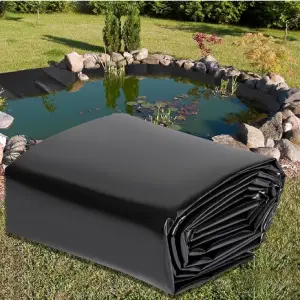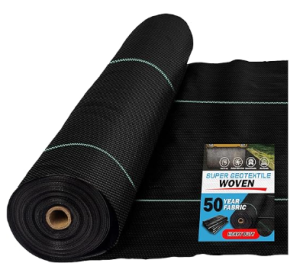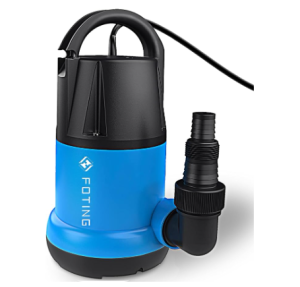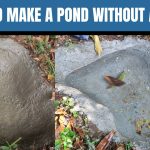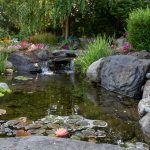How to Build a Trout Pond
Trout fishing is a popular pastime for many outdoor enthusiasts. If you have a passion for fishing and want to create your own private fishing spot, building a trout pond could be the perfect solution. Not only does it provide a source of recreation, but it also adds value to your property. In this comprehensive guide, we will explore the essential steps and considerations for building a trout pond.
Pond Liners For Building A New Pond
Selection
The first step in building a trout pond is selecting the right location. The ideal site should have access to a reliable water source, such as a natural spring or a well. Additionally, the area should receive adequate sunlight and be free from excessive runoff and pollutants. It’s crucial to consider the topography of the land to ensure proper water flow and drainage.
Permitting and Regulations
Before breaking ground on your trout pond, it’s essential to research and obtain any necessary permits and approvals. Regulations regarding pond construction and water usage can vary by region, so consulting with local authorities or a professional pond builder is recommended. Understanding the legal requirements will help you avoid potential setbacks during the construction process.
Design and Planning
Check Pond Underlayerment Price
Once you’ve identified a suitable location and secured the required permits, it’s time to develop a detailed plan for your trout pond. Consider the size and depth of the pond, as well as the surrounding landscape. Will you incorporate aeration systems or natural features like rocks and vegetation? A well-thought-out design will contribute to the overall health and sustainability of the pond ecosystem.
Excavation and Construction
The excavation phase is a critical aspect of building a trout pond. Depending on the size of the pond, you may need to enlist the services of a professional excavator. The depth of the pond is particularly important for trout habitat, as they thrive in cool, oxygenated water. A depth of at least 8 to 10 feet is recommended to provide suitable conditions for trout to thrive.
Water Source and Management
Maintaining a consistent and clean water source is vital for the success of your trout pond. If natural springs or groundwater are not available, you may need to explore options for filling and replenishing the pond. Implementing a water management plan, which may include rainwater harvesting or a well-designed inflow system, will ensure that the pond remains healthy and sustainable for trout.
Aeration and Oxygenation
Trout require well-oxygenated water to thrive. Installing aeration systems, such as diffused aerators or fountains, can help maintain adequate oxygen levels in the pond. Proper aeration is especially crucial during hot summer months when water temperatures rise and oxygen levels naturally decrease. By investing in quality aeration equipment, you can create an optimal environment for trout to flourish.
Stocking and Management
After the pond construction is complete, it’s time to introduce trout to their new habitat. When stocking trout, it’s important to consider the size of the pond and its carrying capacity. Overstocking can lead to competition for resources and negatively impact the overall health of the fish population. Regular monitoring and management practices, such as feeding and predator control, are essential for sustaining a thriving trout population.
Vegetation and Habitat Enhancement
Incorporating aquatic vegetation and habitat structures can significantly improve the quality of a trout pond. Plants provide cover and shelter for fish, contribute to water quality, and enhance the overall aesthetics of the pond. Additionally, strategically placed habitat features, such as submerged logs and rock piles, create diverse environments that support a healthy and balanced ecosystem.
Water Quality and Testing
Regular water quality testing is essential for ensuring the well-being of trout and other aquatic life in the pond. Monitoring parameters such as pH, dissolved oxygen, and nutrient levels can help identify any potential issues early on. By maintaining optimal water quality, you can create an environment that supports the growth and reproduction of trout, ultimately leading to a sustainable fishery.
Fishing and Recreation
Once your trout pond is established and the fish population has had time to mature, you can begin to enjoy the recreational opportunities it offers. Whether it’s fly fishing, spin casting, or simply relaxing by the water’s edge, a well-designed trout pond provides endless enjoyment for anglers of all ages. Sharing the experience with family and friends can create lasting memories and strengthen your connection to the outdoors.
Environmental Considerations
Building a trout pond involves a responsibility to protect and conserve the surrounding environment. Implementing erosion control measures, minimizing chemical inputs, and preserving natural habitats are essential practices for responsible pond management. By prioritizing environmental stewardship, you can create a trout pond that harmoniously coexists with the local ecosystem.
Final Words
Building a trout pond is a rewarding endeavor that requires careful planning, attention to detail, and a commitment to sustainability. By following the essential steps outlined in this guide, you can create a thriving aquatic ecosystem that supports a healthy trout population and provides countless hours of outdoor enjoyment. Whether you’re a seasoned angler or a nature enthusiast, the process of building and maintaining a trout pond offers a unique and fulfilling connection to the natural world.



